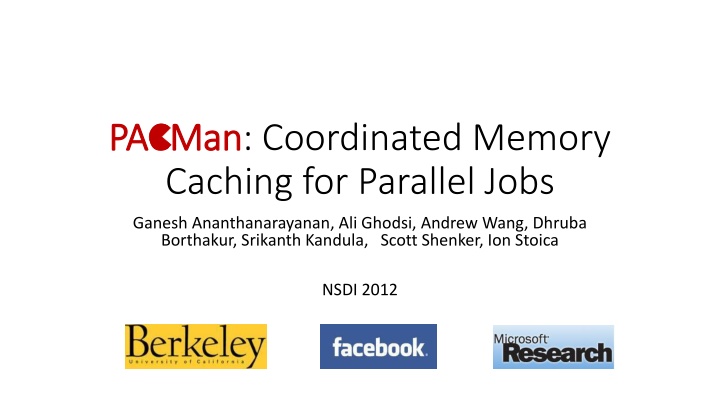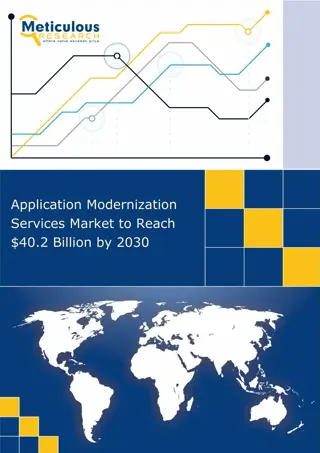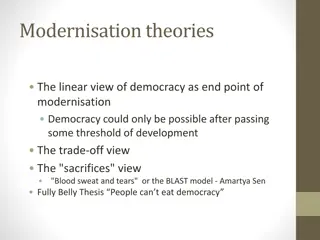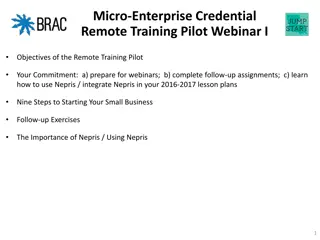
Digital Learning Infrastructure & IT Modernization Pilot Webinar
This webinar offers grants to HBCUs, TCUs, and MSIs for IT modernization and expanding digital learning infrastructure. Learn about submission guidelines, absolute priorities, and project development strategies. Explore how institutions can enhance leadership, human capacity, and infrastructure to support digital learning.
Download Presentation

Please find below an Image/Link to download the presentation.
The content on the website is provided AS IS for your information and personal use only. It may not be sold, licensed, or shared on other websites without obtaining consent from the author. If you encounter any issues during the download, it is possible that the publisher has removed the file from their server.
You are allowed to download the files provided on this website for personal or commercial use, subject to the condition that they are used lawfully. All files are the property of their respective owners.
The content on the website is provided AS IS for your information and personal use only. It may not be sold, licensed, or shared on other websites without obtaining consent from the author.
E N D
Presentation Transcript
PACMan PACMan: Coordinated Memory Caching for Parallel Jobs Ganesh Ananthanarayanan, Ali Ghodsi, Andrew Wang, Dhruba Borthakur, Srikanth Kandula, Scott Shenker, Ion Stoica NSDI 2012
Motivation JOBS Scheduler
In-Memory Caching Majority of jobs are small in size Input data of most jobs can be cached in 32GB of memory 92% of jobs in Facebook s Hadoop cluster fit in memory IO-intensive phase constitute significant portion of datacenter execution 79% of runtime, 69% of resource
PA Man: P Parallel A All-or-nothing C Cache MAN MANager Globally coordinates access to its distributed memory caches across various machines Two main tasks: Support queries for the set of machines where block is cached Mediate cache replacement globally across machines
PA Man Coordinator Keep track of the changes that are made by clients. Maintain a mapping between every cached block and the machines that cache it. Implements the cache eviction policies such as LIFE and LFU-F Secondary coordinator on cold standby as a backup.
PA Man Clients Service requests to existing cache blocks and manage new blocks. Data is cached at the destination, rather than the source What Is the Optimal Eviction Policy?
Key Insight: All-or-Nothing Property Tasks of small jobs run simultaneously in a wave Task duration (uncached input) Task duration (cached input) slot1 slot1 slot1 slot2 slot2 slot2 time time time completion time completion time completion time All-or-nothing: Unless all inputs are cached, there is no benefit
Problem of Traditional Policies Simply maximizing the hit-rate may not improve performance Ex) If we have Job 1 and Job 2 where Job 2 depends on result of Job 1 Task duration (uncached input) Task duration (cached input) Job 1 Job 2 Job 1 Job 2 Sticky Policy: Evict the Incomplete Caches first. slot1 slot2 slot3 slot4 slot1 slot2 slot3 slot4 Job 2 completion Job 1 completion Job 1 completion Job 2 completion
Eviction Policy - LIFE LIFE Goal: Minimize the average completion time of jobs largest file with largest wave-width Are there any Incomplete Files? Wave-width: Number of parallel tasks of a job YES NO Evict largest Incomplete File Evict largest Complete File
Eviction Policy LFU LFU- -F F Goal: Maximize the resource efficiency of the cluster (Utilization) Are there any Incomplete Files? YES NO Evict least accessed Incomplete File Evict least accessed Complete File
Eviction Policy LIFE vs LFU-F Job 1 Wave-width: 3 Job 2 Wave-width: 2 Capacity: 3 Frequency: 2 Capacity: 4 Frequency: 1 LIFE: Evict the highest wave-width LFU-F : Evict the lowest frequency slot1 slot2 slot3 slot1 slot2 slot3 Job 1 Job 1 slot4 slot5 slot4 slot5 Job 2 Job 2 Capacity Required: 3 Capacity Required: 4
Results: PACMan vs Hadoop Significant reduction in completion time for small jobs. Better efficiency at larger jobs.
Results: PACMan vs Traditional Policies LIFE performs significantly better than MIN, despite having lower hit ratio for most applications. Sticky-policy help LFU-F have better cluster efficiency.
Summary Most datacenter workloads are small in size, and can fit in memory. PACMan Coordinated Cache Management System Take into account All-or-nothing nature of parallel jobs to improve: Completion Time (LIFE) Resource Utilization (LFU-F) 53% improvement in runtime, 54% improvement in resource utilization over Hadoop.
Discussion & Questions How fair is PACMan? Will it favor or prioritize certain types of jobs over another? Is it okay? Are there workloads where all-or-nothing property does not hold true?
Scalability of PACMan PACMan client saturate at 10-12 tasks per machine, for block sizes of 64/128/256MB, which is comparable to Hadoop Coordinator maintains a constant ~1.2ms latency till 10,300 requests per second, significantly better than Hadoop s 3,200 requests per second bottleneck.
Evaluation Experimental Platform: 100-node cluster in Amazon EC2 34.2GB of memory, 20GB of cache allocation for PACMan per machine 13 cores and 850 GB storage Traces from Facebook and Bing






















